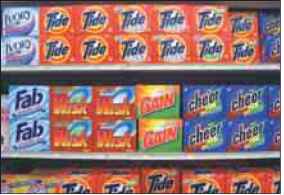Reasons to Measure Effectiveness
Assessing the effectiveness of ads both before they are implemented and after the final versions have been completed and fielded offers a number of advantages:
1. Avoiding costly mistakes. The top three advertisers in the United States spent over $7.3 billion in advertising and promotion in 2001. The top 10 spent a total of over $21 billion. This is a lot of money to be throwing around without some understanding of how well it is being spent. If the program is not achieving its objectives, the marketing manager needs to know so he or she can stop spending (wasting) money on it.
Just as important as the out-of-pocket costs is the opportunity loss due to poor communications. If the advertising and promotions program is not accomplishing its objectives, not only is the money spent lost but so too is the potential gain that could result from an effective program. Thus, measuring the effects of advertising does not just save money. It also helps the firm maximize its investment. For example, one mass merchant discovered that promoting Tide detergent generated more cross-selling opportunities than did promotions of nonpremium brands like Purex (Exhibit 19-1). At the same time, promotions of motor oil had no cross-selling impact.1
2. Evaluating alternative strategies. Typically a firm has a number of strategies under consideration. For example, there may be some question as to which medium should be used or whether one message is more effective than another. Or the decision may be between two promotional program elements. For example, should research be spent on sponsorships or on advertising? One retailer found that advertising do-it-yourself products on the radio was effective in rural areas but not in urban locales.2 Research may be designed to help the manager determine which strategy is most likely to be effective. Companies often test alternate versions of their advertising in different cities to determine which ad communicates most effectively. They may also explore different forms of couponing.
3. Increasing the efficiency of advertising in general. You may have heard the expression "can't see the forest for the trees." Sometimes advertisers get so close to the project they lose sight of what they are seeking, and because they know what they are trying to say, they expect their audience will also understand. They may use technical jargon that not everyone is familiar with. Or the creative department may get too creative or too sophisticated and lose the meaning that needs to be communicated. How many times have you seen an ad and asked yourself what it was trying to say, or how often have you seen an ad that you really like, but you can't remember the brand name? Conducting research helps companies develop more efficient and effective communications. An increasing number of clients are demanding accountability for their promotional programs and putting more pressure on the agencies to produce. As IMC Perspective 19-1 demonstrates, effective research can be used for both of these purposes.
4. Determining if objectives are achieved. In a well-designed IMC plan, specific objectives are established. If objectives are attained, new ones need to be established in the next planning period. An assessment of how program elements led to the attainment of the goals should take place, and/or reasons for less-than-desired achievements must be determined.
Arguments for and Against Measuring Effectiveness
Exhibit 19-1 Tide has been shown to be an effective promotional draw
Exhibit 19-1 Tide has been shown to be an effective promotional draw

Continue reading here: Imc Perspective I9i
Was this article helpful?